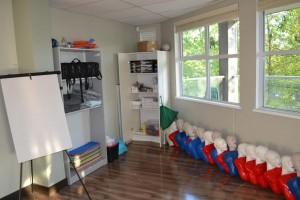Basic Life Support Training
Basic Life Support is a set of interventions created by the American Heart Association to try and restore the spontaneous circulation of blood in the body after cardiac arrest. Cardiac arrest where the heart is not beating can happen because of a heart attack or preexisting heart condition such as ischemic heart disease. Both those things are the leading causes of death in the entire world. With such a prevalent condition happening all around us, it is part of our responsibility as a member of the community to be trained in how to manage cardiac arrest.
Chest compressions and rescue breaths are the two main interventions taught in Basic Life Support training. Compressions and rescue breaths manually pump the heart to get blood circulating in the body. These interventions are also meant to help “restart” the heart, along with automated external defibrillaton. AEDs are machines that are attached to the chest with wires and pads and send electrical shock to the heart.
BLS training courses

We have three BLS training courses offered at our providers:
- Heartsaver CPR classes are meant for healthcare providers and the general public. The Heartsaver class for HCPs is 4.5 hours long while the one for the public is 4 hours long. These programs teach students how to give CPR during a one-person rescue. First aid and defibrillation are also part of basic CPR training. Trainees are taught how to manage emergencies such as bleeding and choking.
- Basic Life Support for healthcare providers is 4.5 hours long as well. Unlike the Heartsaver programs that teach one-person CPR, BLS for HCPS teaches how to give CPR in one and two-person rescue. The BLS program also teaches trainees about the 2010 guidelines for Basic Life Support.
Training certification for BLS
All three of the BLS programs give students certification once they complete training. These training credentials expire two years after they are awarded to the student. They can be renewed through a re-certification class that is shorter than the training program where the certificate was initially awarded from. Re-certification is available for one BLS course, Basic Life Support for HCPs. It is 4 hours long. The other two BLS programs do not have re-certification available.
Note: The general public program (Heartsaver CPR) is an optional certification program. The student can choose to not get certified by not taking the skills test at the end of training.
Enrolment and training locations
Enrolment can be completed through our provider webpages, with the online application form. The form can be filled out at any time during the day, making it a favorite among students when they sign up for training. Similarly, you can also enrol via e-mail, which can also be sent at any time. However, expect replies to your request during business hours only. Enrolment can be completed over telephone call and in person during business hours as well.
Training locations: Los Angeles, San Francisco, Honolulu, Las Vegas, Seattle, and Portland.